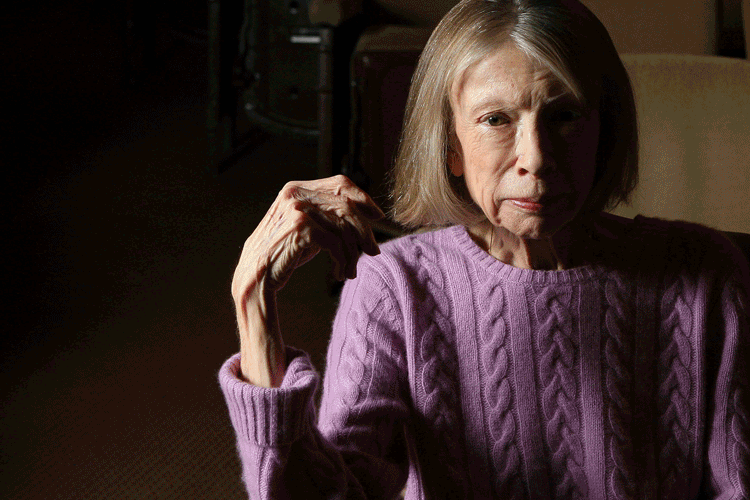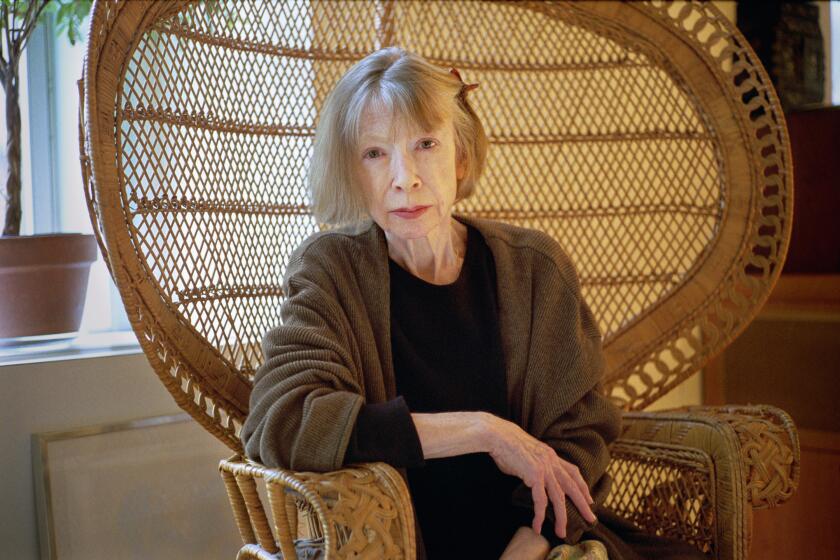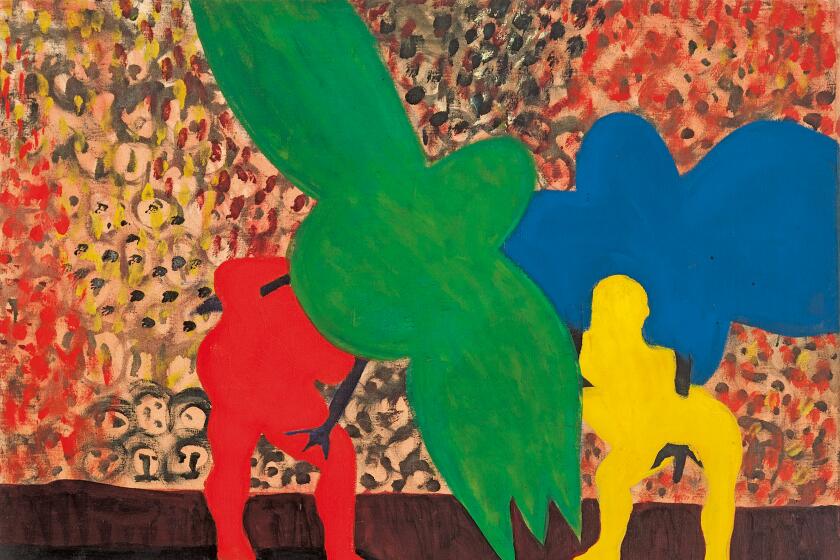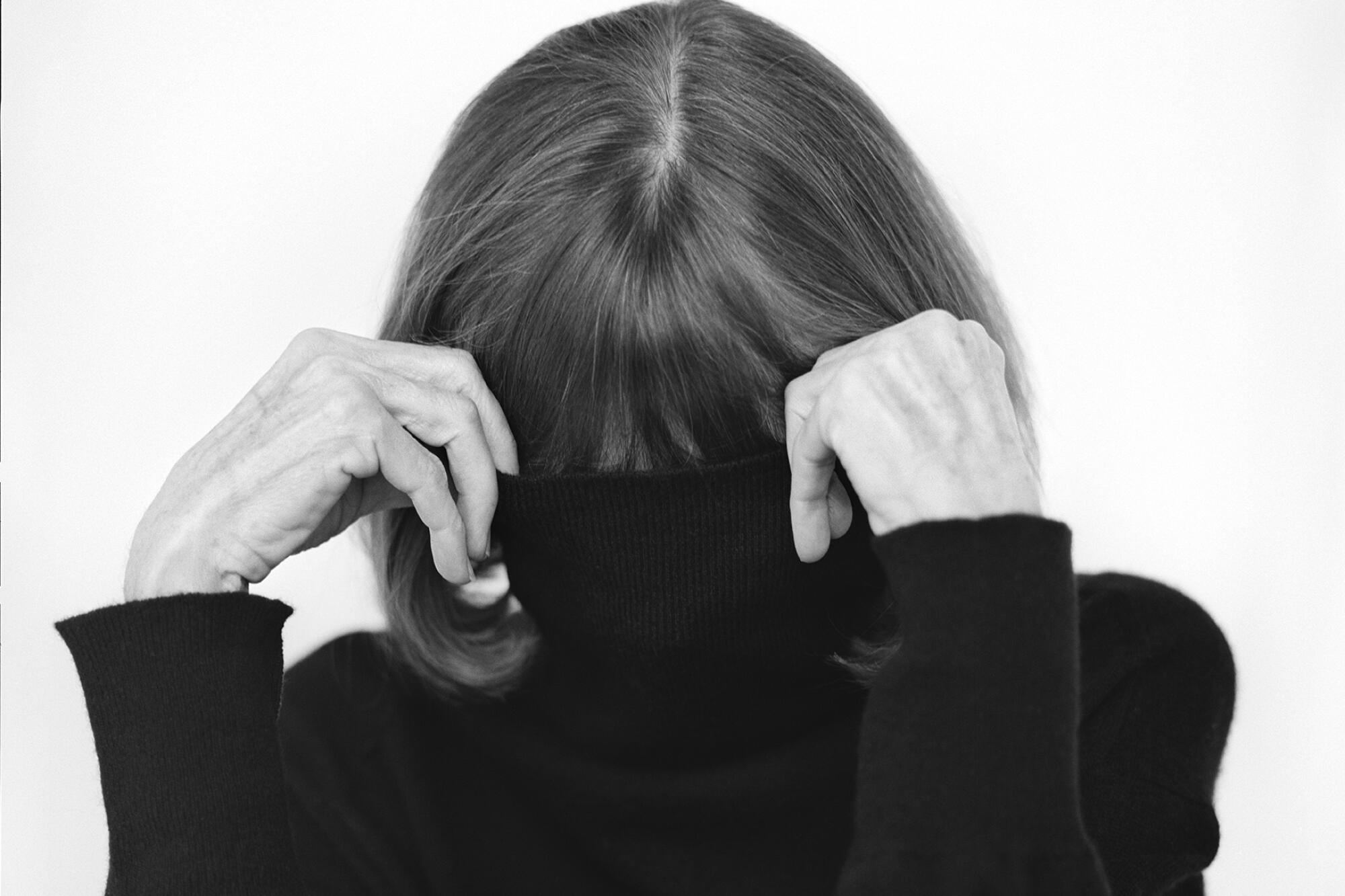
I will confess that early last week, in an act of deadline avoidance disguised as research, I spent hours lurking at the auction of Joan Didion’s estate organized by Stair Galleries in New York, attempting to rationalize the acquisition of an object connected to the author.
Perhaps a porcelain charger imprinted with California motifs? $1,300, as I write this. Or maybe a tantalizing 4-by-4-inch painting of a unicorn emerging from a pink seashell, whose bids jumped from $400 to $1,000 over the course a day? Or what about a pile of actual shells? $1,000, last I checked. Did Didion, a writer whose words frequently probed and destabilized established narratives, keep a basket of seashells in her bathroom? There’s something charmingly banal about that idea — the sort of detail that might appear in a Joan Didion essay about murder and the Santa Ana winds.
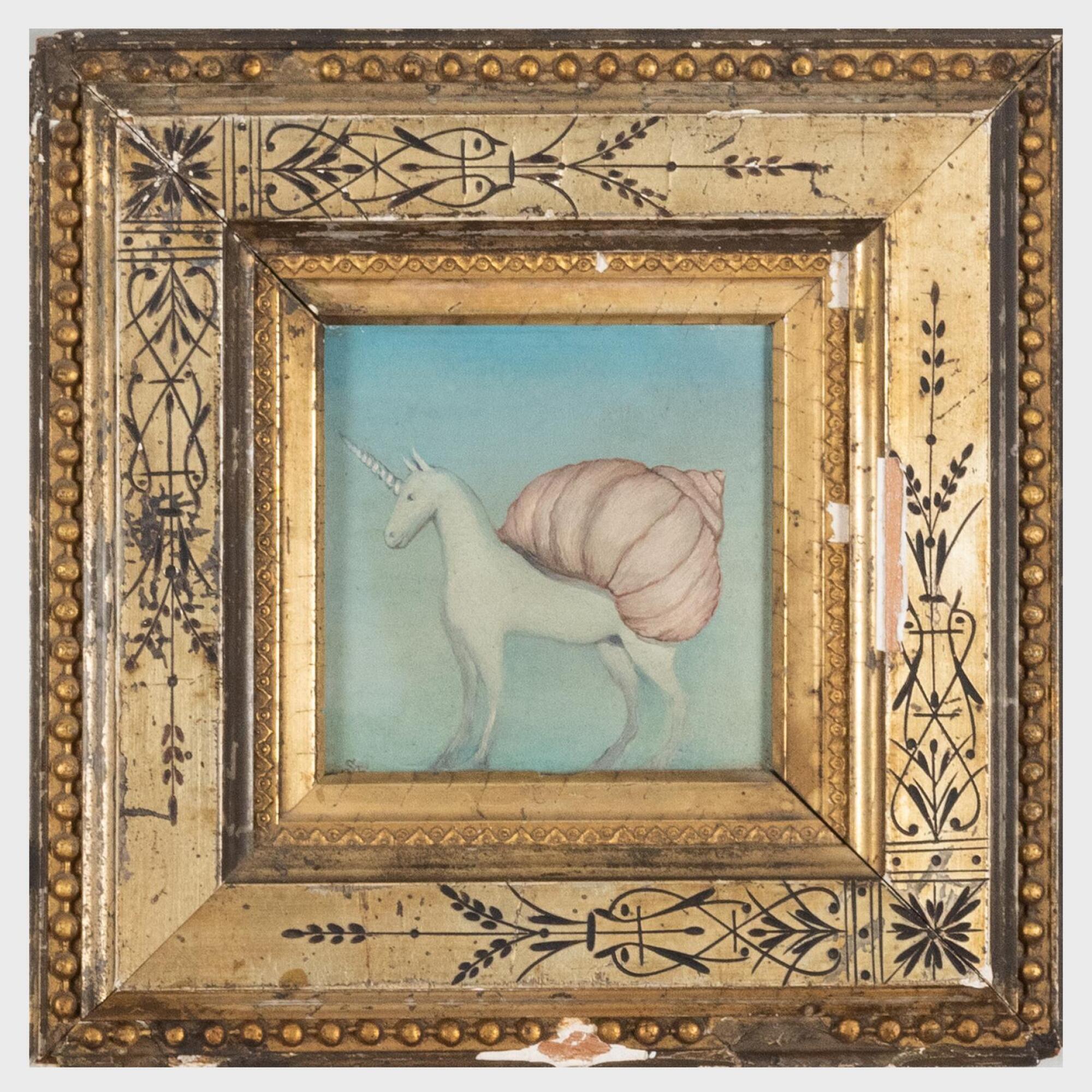
I will likely not come into any Didion relics and the magic dust they convey. But fortunately for those with nondisposable income, an exhibition at the Hammer Museum allows some reverential proximity to the writer, who died last year at 87, and whose body of work marks a singular overlap between the worlds of journalism, Hollywood and the literary high-brow, as well as the West and East Coast. (Born in Sacramento, Didion lived for periods in New York and Los Angeles before settling permanently in Manhattan in the late 1980s.)
“Joan Didion: What She Means,” organized by New Yorker critic Hilton Als in collaboration with Hammer chief curator Connie Butler and curatorial assistant Ikechukwu Onyewuenyi, is not the sort of show you may have come to expect on a writer. It is not composed of vitrines bursting with manuscripts. Nor are there old ashtrays or a favored typewriter. First editions of her books are not displayed on plinths like fragments of the True Cross. Instead, the exhibition takes Didion as a point of departure, interpreting her writing life principally through art.
“I don’t want you to think of this as a definitive portrait of Joan,” says Als in the digital guide to the show. “I’m borrowing from the collage effects of her work, particularly her late work, where she pulled in a lot of different kinds of information to make an essay or a portrait of a place or a person.”
One of the canvases opening the show, for example, is a landscape by turn-of-the-20th century California painter Elmer Wachtel depicting Mt. San Gorgonio enveloped in clouds. It harks back to the overland journey Didion’s ancestors made across the U.S. in the 1840s, an episode chronicled in her 2003 collection “Where I Was From.” Her family, quite famously, was part of a faction that split from the Donner-Reed party in Nevada and thereby avoided calamity in the Sierras.
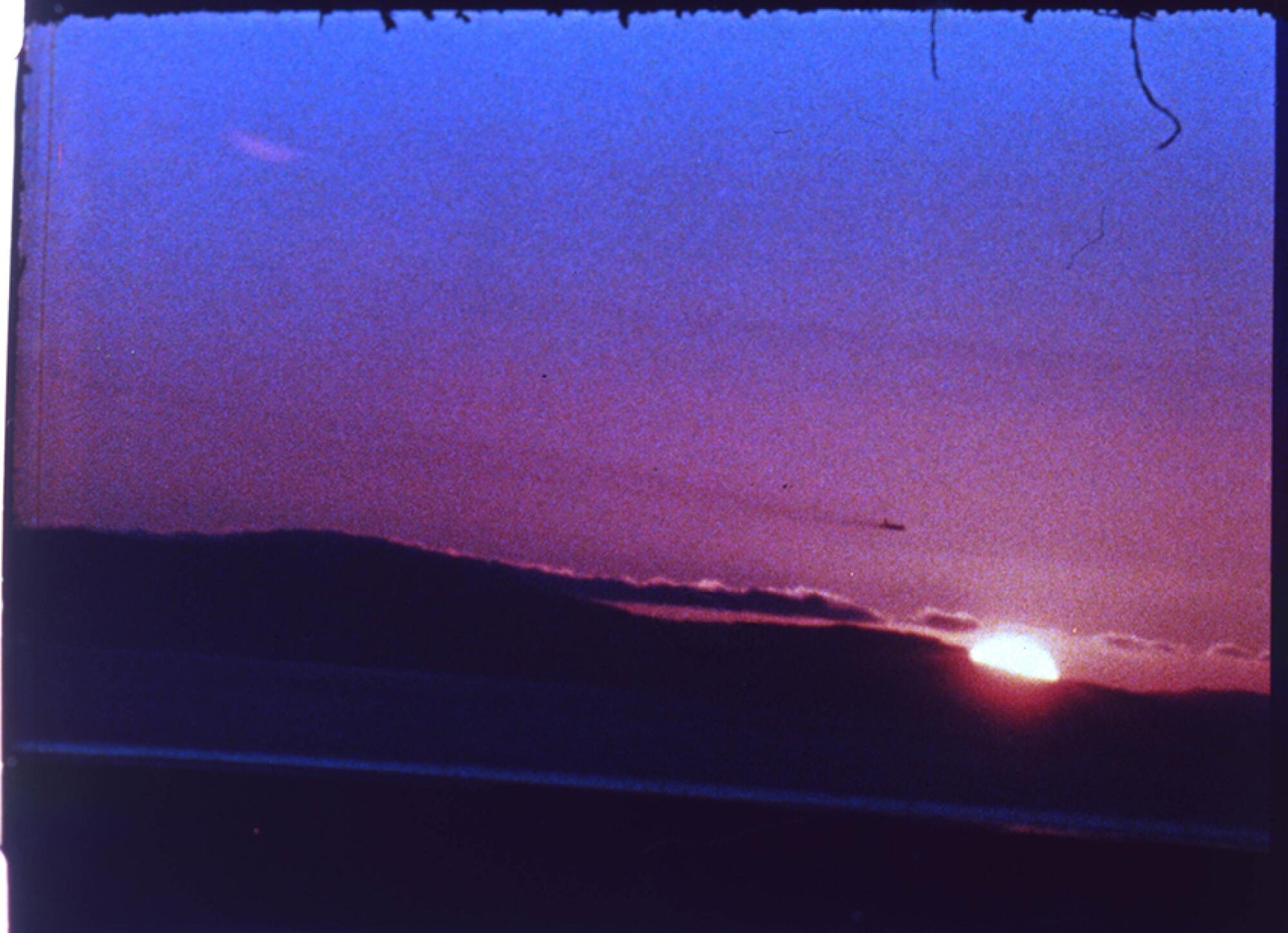
Didion bridged the world of Hollywood, journalism and literature in a career that arced most brilliantly in the realms of social criticism and memoir.
The exhibition is not without personal artifacts. Amid artworks by Cady Noland, Jack Pierson and Ed Ruscha, a few cases display family photographs, old yearbooks and archival copies of the screenplays Didion wrote with her husband, John Gregory Dunne, for ‘70s-era pictures such as “The Panic in Needle Park” and “A Star Is Born.”
Also on display are a handful of objects associated with her family — among them a sign for her father’s real estate brokerage, a lap desk and a wooden potato masher that survived the overland crossing in the hands of her ancestors. The masher functions as deadpan literary device in “Where I Was From” — a totem of the holy narrative that is the European settlement of the West, a narrative Didion proceeded to pick apart in her work. (All that self-reliance, it turns out, was handsomely subsidized by the U.S. federal government.)
If previously the masher had functioned as symbol, the museum’s exhibition now renders it a Didion relic. Having written about it in the past, I was intrigued to lay eyes on its modest proportions. The power of a relic isn’t in its aesthetics but in its narrative — and this unremarkable domestic object holds within it the story of Manifest Destiny overlaid with Didion’s trenchant counternarrative.
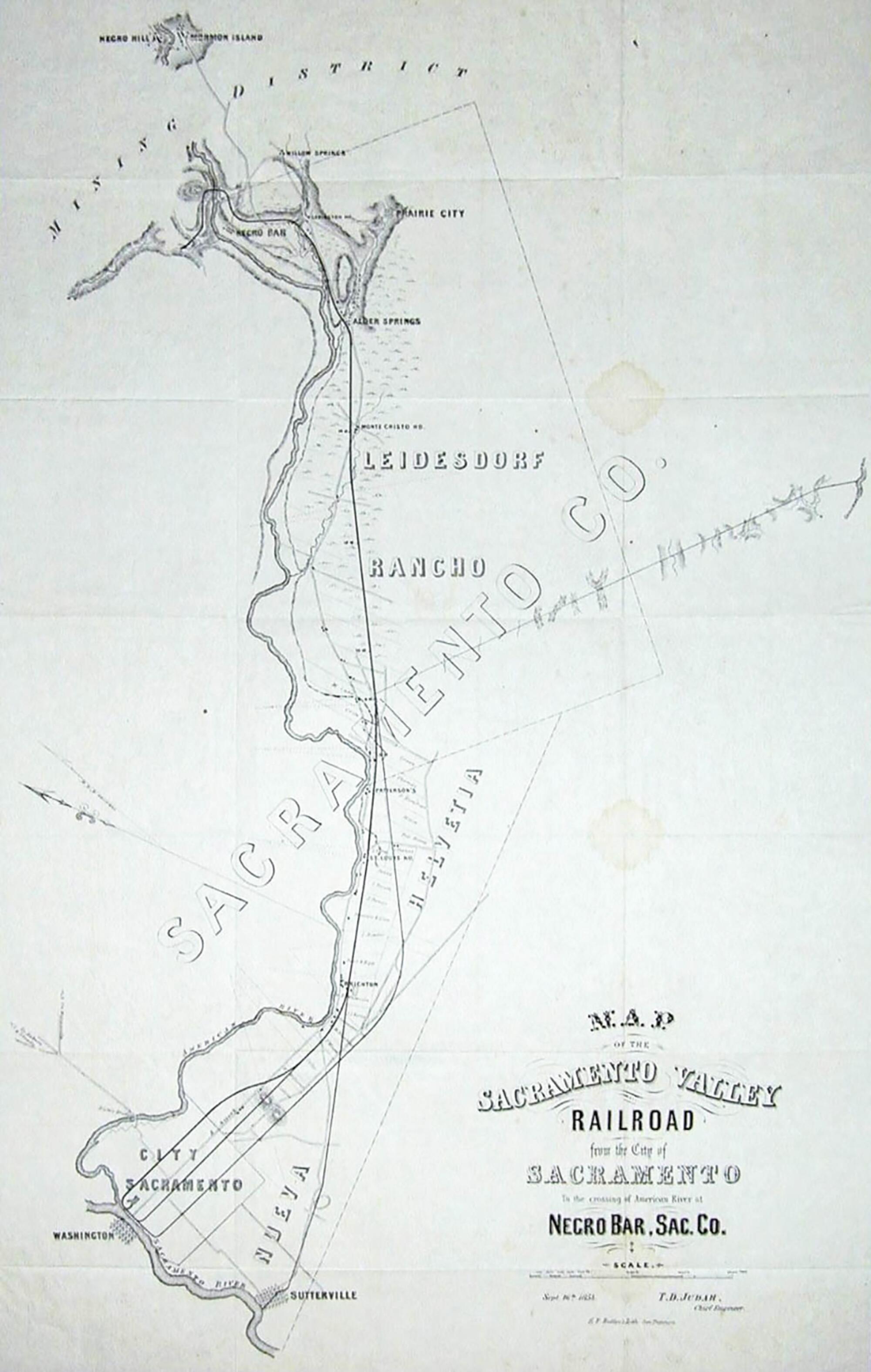
Didion’s book ‘Where I Was From’ picks apart mythologies of the overland crossing that shaped the Anglo West psyche. How a potato masher figures in the story.
For the most part, however, “What She Means” uses art to articulate the broad arcs of the writer’s career: her formative years in Northern California, her first sojourn in New York in the ‘50s, when she got her start as a journalist at Vogue, and the fertile two decades-plus she spent in Los Angeles starting in the mid-1960s, where she produced works such as “The White Album.”
Of these installations, the most potent arrives early on, in a room that takes on Didion’s obsession with water and Western archetypes — two inextricably entwined themes. (In her 1977 essay, “Holy Water,” she quotes historian Bernard DeVoto: “The West begins where the average annual rainfall drops below 20 inches.”)
In a large gallery, an abstract painting by Pat Steir captures the patterns made by rain, a wire floor sculpture by Alan Saret takes the form of fire and a pair of meticulous graphite drawings of a desert floor (by Vija Celmins) leaves the viewer practically coughing dust. In the center of the space, a weighty sculpture by Maren Hassinger renders a river’s form out of ropes and chains (a smart evocation of the ways water is engineered in California). Observing the entire scene is a slow-motion loop of John Wayne, taken from the 1939 movie “Stagecoach,” showing the actor as rugged individualism personified: saddle in one hand, rifle in the other, a bead of sweat pouring down his chiseled face.
Didion wrote about Wayne in a 1965 essay. She chronicles the macho bluster on the Mexico City set of “The Sons of Katie Elder,” but the story ends over dinner, with the Duke ordering Pouilly-Fuissé for the table and some red Bordeaux for himself. Western myth, it turns out, is nourished by a taste for French wine.
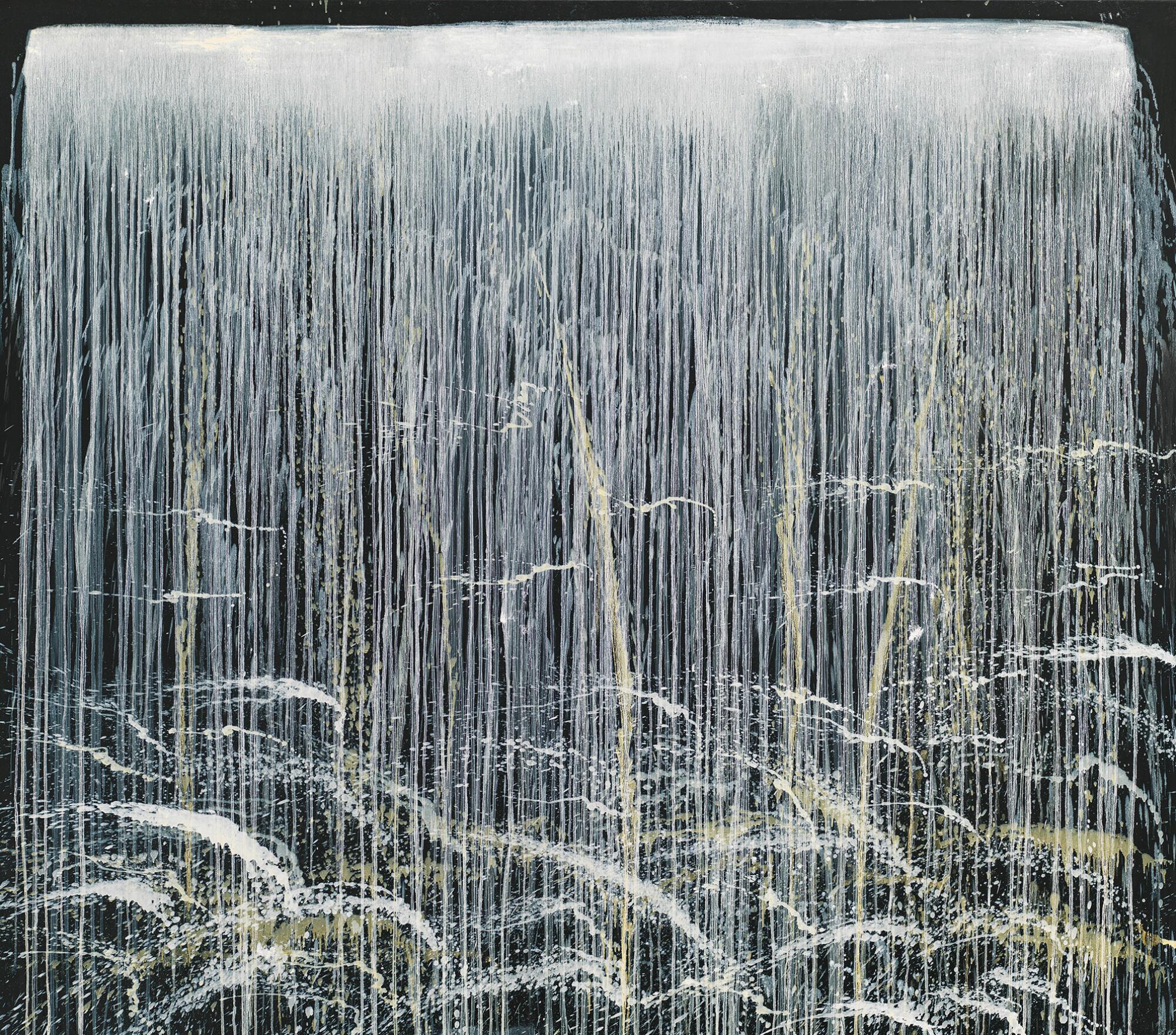
Other poetic moments surface. I found myself quite taken by a 1967 film by Andy Warhol titled “Reel 77 of **** (Four Stars),” which captures the spectacle of a Los Angeles sunset followed by its quiet disintegration into dark. The accompanying soundtrack features Velvet Underground singer Nico slowly whispering a poem: “I / am / always alive. / You are / always / a light. / You are / always alive.”
In the context of this show, the video serves as a marker of Didion’s time living in Malibu — which she wrote about in “The White Album.” (“I had not before 1971 and will probably not again live in a place with a Chevrolet named after it.”)
Also intriguing are the evocations of Didion’s frequent migraines — covered in her 1968 essay “In Bed.” These are articulated through a pair of hard-edged minimalist works on paper by Anne Truitt: black geometric forms occupying a field of white. I get regular migraines. (I got one while writing this essay — since writing about a museum show about a celebrated writer by another celebrated writer is a one-way ticket to headache-town.) I found an affecting truth in Truitt’s forms, which echo the sensation in my head as the headache takes over and obscures all thought and light.
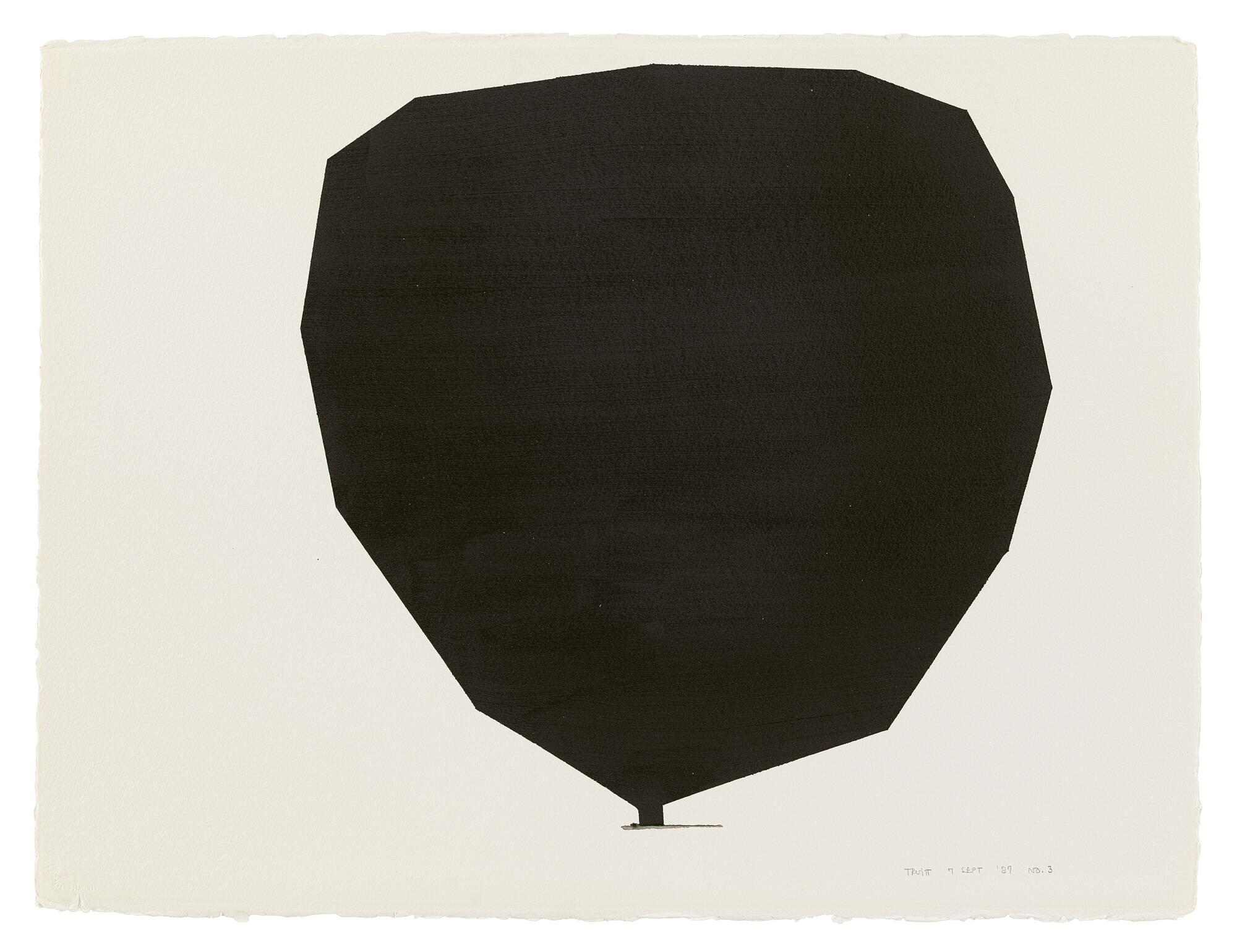
Unfortunately, other parts of “What She Means” just felt jumbled.
Large gallery spaces swallow some of the more modestly scaled works whole. A gallery exploring the “White Album” years boomerangs from Sharon Tate to migraines to the Black Panthers. (What works on Didion’s page doesn’t always work in a gallery.) And the final room feels rushed, like a writer trying to tack an end to a story.
Charting Didion’s return to New York in the ‘80s, it gathers a puzzling array of work. Some are inspired by more intimate writings, such as Didion’s 2005 book “The Year of Magical Thinking,” a meditation on the death of her husband. Others are drawn from her political writings of the ‘80s and ‘90s, such as her sprawling examinations of politics in Miami and El Salvador, as well as her prescient analysis of the Central Park jogger case in the New York Review of Books.
In Los Angeles, home to the largest population of Salvadorans outside of El Salvador, it seems an oversight not to have explored “Salvador,” her gripping 1983 book, at greater length. (As an L.A. kid who came of age in the ‘80s, I discovered Didion through “Salvador” and not “The White Album.”) Instead, “Salvador” is referenced by only two pieces of art: a 1980 photograph by Susan Meiselas showing the facade of a house bearing a white handprint, a marker of the death squads; and a 2012 piece by Salvadoran-born artist Ronald Morán that reveals ghostly human figures in a labyrinth illuminated by ultraviolet light. They are powerful, but lose their resonance amid a clutter of other images.
Collaging a writer who collaged may have been the curatorial aim, in which case a salon-style installation might have been a better visual tactic — along with a tighter focus. Didion covered an encyclopedic array of subjects over more than half a century. The West, a topic the writer returned to repeatedly over the course of her career, might have made for a more cohesive presentation — and would certainly have resonated in L.A., a city that wears its tropes heavily.
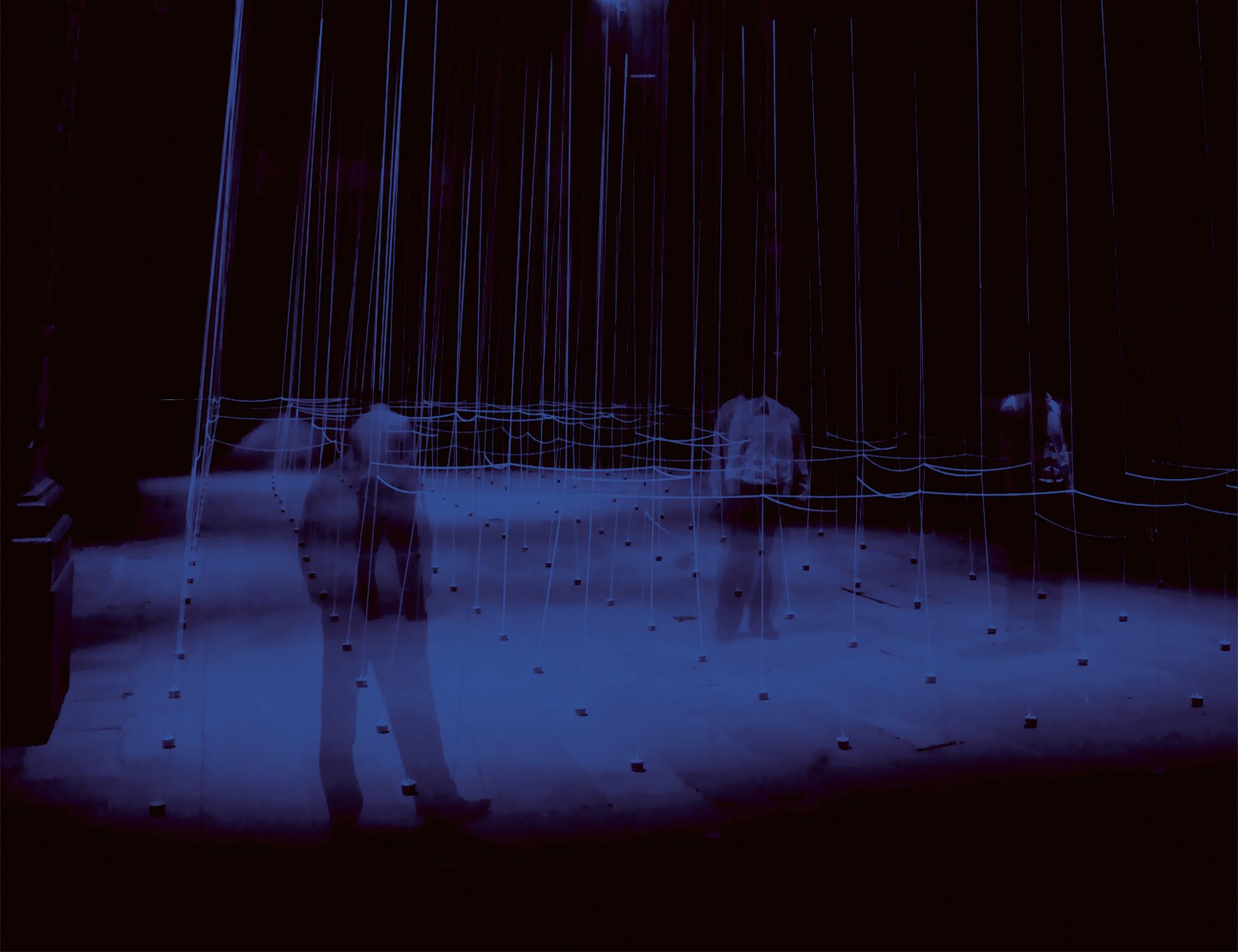
The gifted painter, who died in 1966, drew from Renaissance and Old Master artists. An absorbing survey of his career is now on view at the Hammer Museum.
What is most curious, however, is that this show seems to take its subject at her word. Didion’s ideas are explored largely as she framed them. For a writer who sought to unravel narratives, what narratives about Saint Joan might need unraveling? What are the contradictions and elisions that emerge?
In “Slouching Towards Bethlehem,” Didion wrote, “My only advantage as a reporter is that I am so physically small, so temperamentally unobtrusive, and so neurotically inarticulate that people tend to forget that my presence runs counter to their best interests.” That’s the same Didion who once likened writing to acting because “it’s performance.” The same Didion who was photographed smoking cigarettes while perched confidently on a Corvette Stingray — and who would, late in life, pose in Céline sunglasses for an ad campaign.
The Céline images, taken by Juergen Teller, are in the show. Her sunglasses are among the objects up for auction in New York. They’re currently going for $3,250.
Joan Didion: What She Means
Where: Hammer Museum, 10899 Wilshire Blvd., Los Angeles
When: Through Feb. 19
Admission: Free
Info: hammer.ucla.edu
More to Read
The biggest entertainment stories
Get our big stories about Hollywood, film, television, music, arts, culture and more right in your inbox as soon as they publish.
You may occasionally receive promotional content from the Los Angeles Times.
